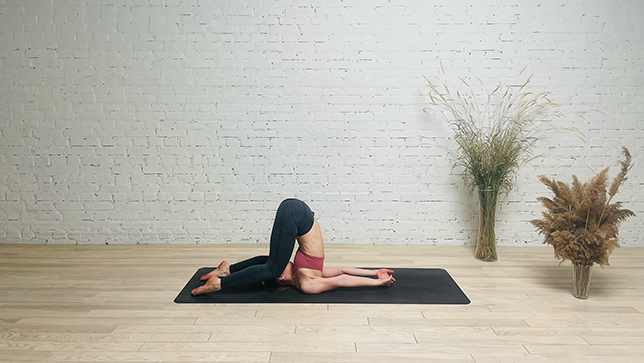Knee-To-Ear Pose - Karnapidasana

Contents
Knee-To Ear-Pose or Karnapidasana (kar-nah-pee-DAH-sana) consists of three Sanskrit words: “Karna” — meaning “ear”, “Pida” — meaning “pressure”, and “Asana” — meaning “pose” or “posture”. This is one of the most important intermediate yoga poses that belongs to the forward bends categories with a lot of health benefits.
Karnapidasana is focusing on the shoulders and spine and also involves calves and glutes & hip flexors and hamstrings muscles and stretches and strengthens legs; rejuvenates abdominal organs and also reduces fatigue, increases energy, and provides a calming effect.
Karnapidasana is an extension of “plow pose” or Halasana.
Knee-To-Ear Pose Basics
- Sanskrit: Karnapidasana
- Other Names: The King Of Plow Pose
- Targets: Focus, stretch for back of body from neck to knee
Pose Detail
- Difficulty: Advanced, Intermediate
- By Type: Flexibility Yoga Poses
- Body Position: Forward Bend Yoga Poses
- By Benefit: Yoga Poses For Stress Relief
Step-by-Step Instructions
Benefits and Contraindications
Stretches and strengthens back, shoulders, hip and gluteal muscles
Improves Body Posture
Toning of the thighs and buttocks
Stimulates abdominal organs
Herniated disc conditions and recent surgery
Neck or spine injury
Sciatica
Asthma
High blood pressure
Pregnancy
Menstruation
Migraine
Weak digestion
Modifications, Props and Tips
While performing Karnapidasana if your knees don’t come easily to the ground keep them up until they come to the ground automatically or use blocks.
You will always feel pressure on your neck and you should not move your neck and head to avoid any kind of injury.
There is a light weight in the neck in this pose, so it is recommended to not move your head frequently.
You can also try to perform this asana through a different way, by doing Wheel Pose (Chakrasana).